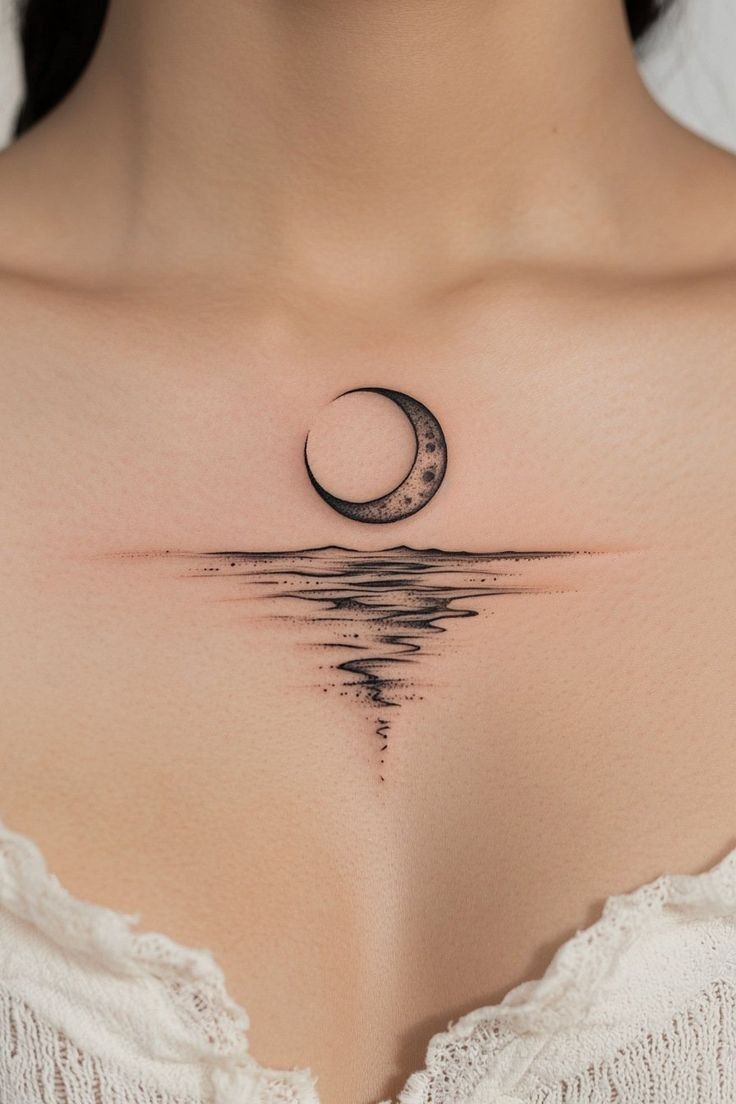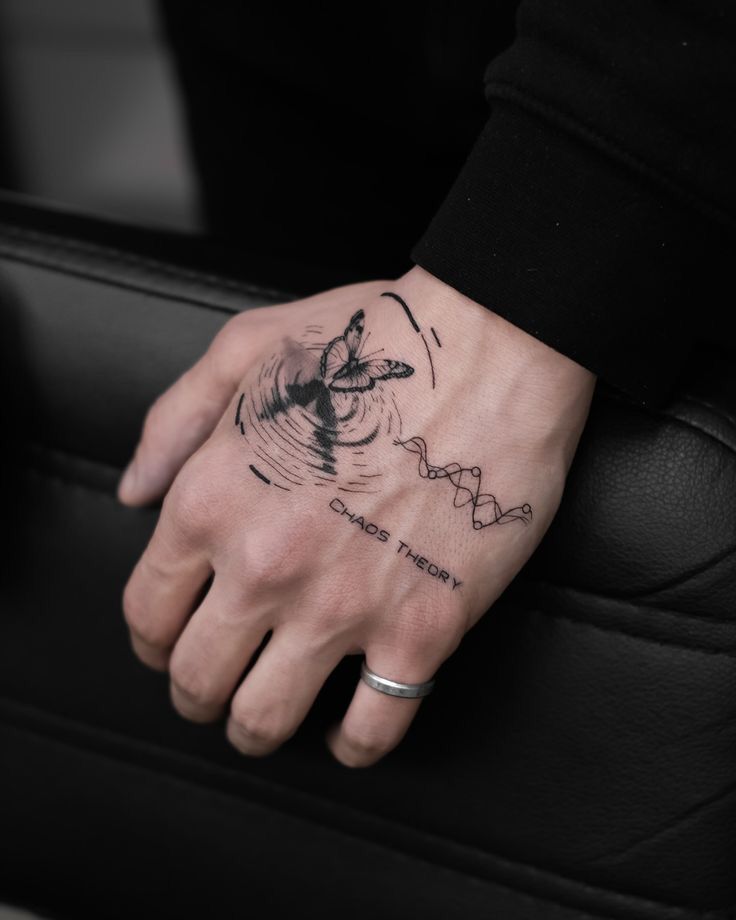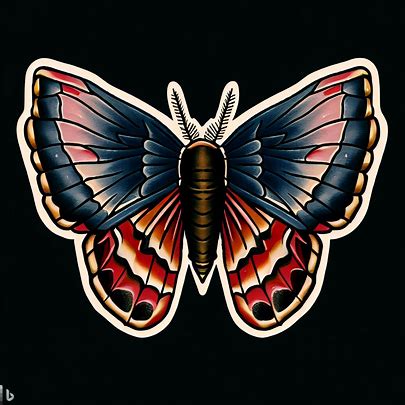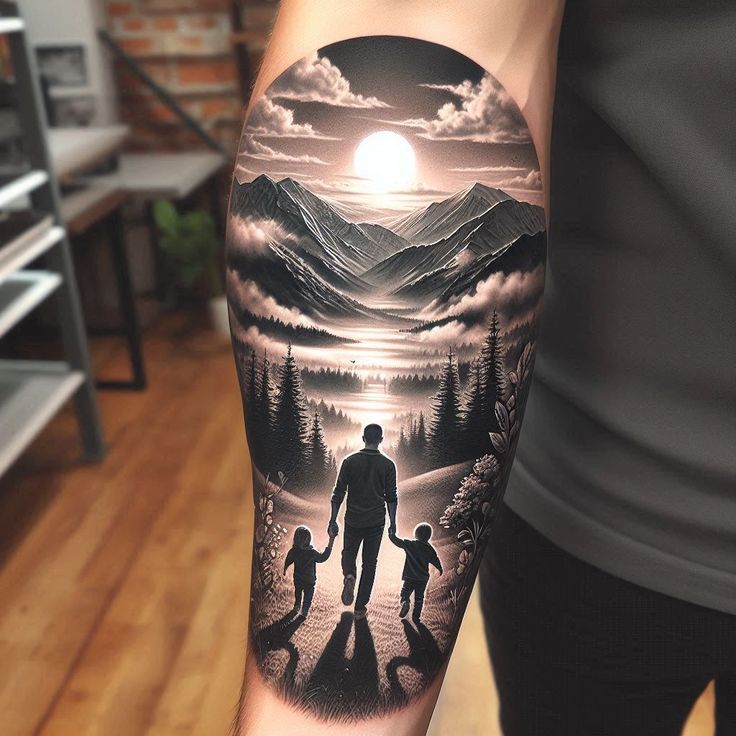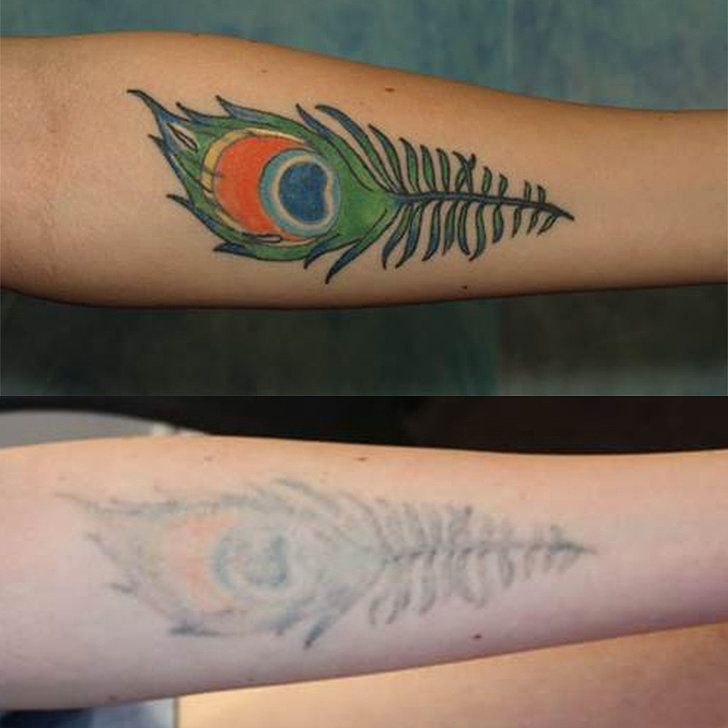The Beauty of Simplicity: Traditional Moth Tattoo Ideas
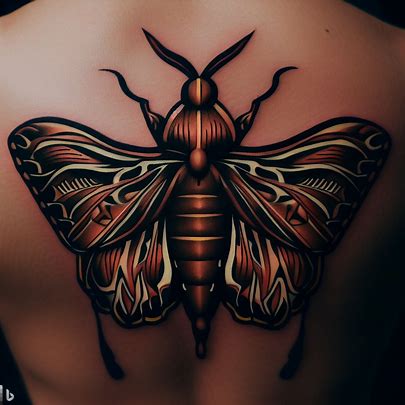
In the world of tattoos, there exists a captivating design that has stood the test of time, intriguing both tattoo enthusiasts and curious minds alike. This design is none other than the traditional moth tattoo. Within the realm of body art, the traditional moth tattoo holds a deep and symbolic meaning, reflecting aspects of nature, transformation, and the intricate beauty of the nocturnal insect.
Traditional Moth Tattoo Meaning
The traditional moth tattoo is not just an artwork etched onto the skin; it is a visual representation of profound symbolism. Moths, these remarkable creatures of the night, carry meanings that resonate with various aspects of life. While butterflies’ Tattoos are known for their vibrant colors and association with transformation, moths have the unique qualities that set them apart.
The symbolism of a traditional moth tattoo often revolves around concepts of determination, vulnerability, and change. Moths are creatures that navigate through darkness with unwavering determination, seeking the light of the moon.
This quality has led them to become symbols of resilience and an emblem of one’s journey through challenges. Much like the moth’s attraction to light, individuals may choose this tattoo to remind them to always seek positivity and growth, even in the face of adversity.
Pain Chart for Traditional Moth Tattoo:
1. Shoulder:
The top area of your shoulder is generally less painful. You might feel a slight pinching sensation like someone is tugging at your skin. It’s more of a quick sting than a strong pain.
2. Upper Arm:
The upper arm, closer to your shoulder, is also quite manageable in terms of pain. It’s like a small bee sting or a scratch, and the pain shouldn’t be too strong.
3. Forearm:
The outer forearm tends to be less painful compared to other areas. It could feel like a mild scratching sensation. Most people find this area bearable.
4. Wrist and Inner Arm:
The wrist and inner arm might be a bit more sensitive. The pain could be similar to snapping a rubber band against your skin. It’s not unbearable, but you might feel it more here.
5. Chest and Collarbone:
The chest area can be quite sensitive, especially near the collarbone. The pain might be more intense here, like a longer-lasting pinch or a sunburn sensation.
6. Back:
The upper back can be less painful due to the abundance of muscle and fat. You might experience a mild scratching sensation or a gentle vibration.
7. Lower Back and Spine:
The lower back and spine area can be more painful as the skin is thinner and there are more nerve endings. The pain could be like a continuous scratching feeling.
8. Thigh:
The outer thigh is generally less painful, with a sensation similar to being scratched by a rough surface. It’s manageable for most people.
9. Calf:
The calf is a good spot for a traditional moth tattoo. The pain might be like a rubber band snap or a series of quick pinches.
10. Ankle and Foot:
The ankle and foot areas can be more sensitive due to bone proximity. The pain could be like a mix of scratching and pinching sensations.
Remember, everyone’s pain tolerance is different, and some people might find certain areas more or less painful than others. The pain from a tattoo is temporary and usually subsides shortly after the tattooing process is completed. It’s important to communicate with your tattoo artist if you’re feeling uncomfortable during the process.
Placement Areas for Females:
- Collarbone
- Wrist
- Ankle
- Upper Back (between shoulder blades)
- Behind the Ear
- Side of Ribcage
- Lower Leg (Shin)
For Boys:
- Forearm
- Chest
- Back (Shoulder Blade)
- Thigh
- Calf
- Bicep
- Ribcage
Celebrity with Moth Traditional Tattoo:
Alex Dorame: She is an American YouTuber, She Made traditional Moth Tattoos on his Forearm, and the colors were black and gray.
Traditional Moth Tattoo Design Ideas
Here we mentioned popular designs for both males and females. Choose the best design and also remember the meaning of your tattoo designs. Below is the All Type of Traditional Moth Tattoo must-read:
American Traditional Moth Tattoo
The American traditional style of tattooing has its roots deeply embedded in history, characterized by bold lines, limited color palettes, and iconic designs. When it comes to the traditional moth tattoo, this style emphasizes the moth’s intricate patterns and features.
The moth may be depicted with wings outstretched, showcasing its ornate details. This style also embraces symbolism associated with the moth’s nocturnal nature, representing a journey into the unknown and a willingness to embrace the mysteries of life.
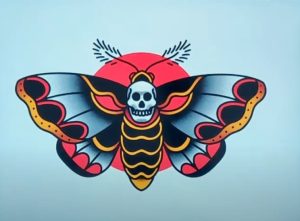
Neo-Traditional Moth Tattoo
The neo-traditional tattoo style takes inspiration from its predecessor but infuses it with modern techniques and a wider color spectrum. This approach allows for greater creativity and a more detailed portrayal of the moth’s delicate features. The neo-traditional moth tattoo may incorporate vibrant hues, intricate linework, and a heightened sense of realism. In this style, the moth’s beauty is brought to life in a way that captures the eye and sparks the imagination.
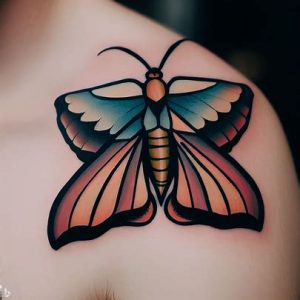
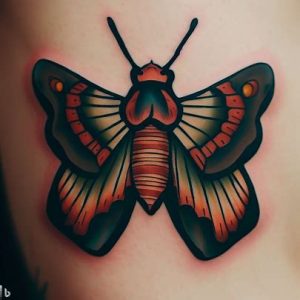
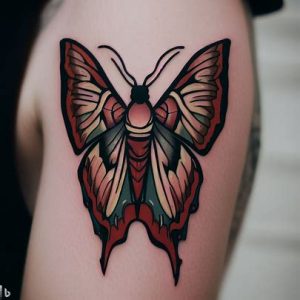
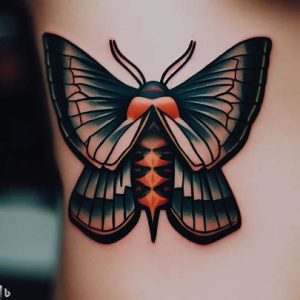
Black Traditional Moth Tattoo
The beauty of a traditional moth tattoo is not limited to its colors. Black traditional moth tattoos hold a unique allure. By utilizing black ink alone, tattoo artists create a striking contrast between light and darkness, symbolizing the moth’s attraction to the moon’s glow. This monochromatic approach to the traditional moth design highlights the intricate linework and adds a touch of mystery to the tattoo’s meaning.
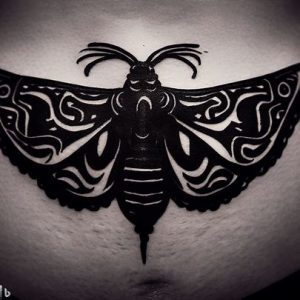


Fox Traditional Moth Tattoo
Incorporating different elements into the traditional moth tattoo can yield captivating results. One such example is the fox traditional moth tattoo. This fusion of two distinct symbols—the fox and the moth—creates a narrative of duality. The fox, known for its cunning nature, blends with the moth’s symbolism to signify adaptability and the ability to navigate between different realms, both physical and spiritual.
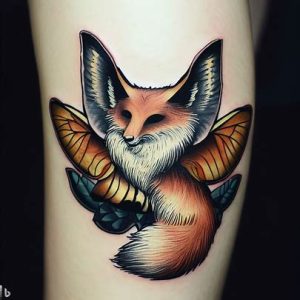
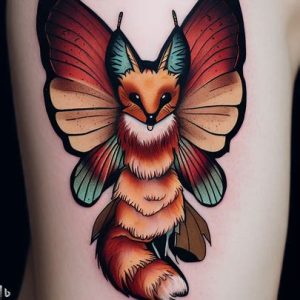

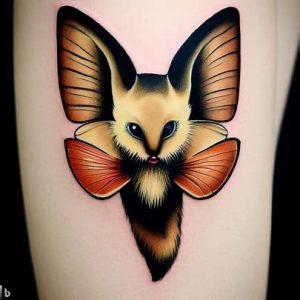
Blue Traditional Moth Tattoo
Color symbolism plays a significant role in tattoo design, and the color blue often carries connotations of serenity, wisdom, and introspection. A blue traditional moth tattoo, therefore, could represent a journey of self-discovery and the pursuit of inner peace. This color choice adds another layer of depth to the traditional moth tattoo’s already intricate meaning.
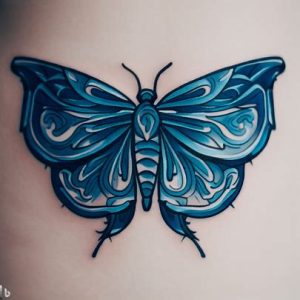
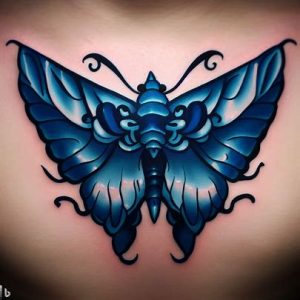
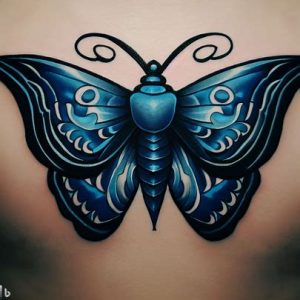
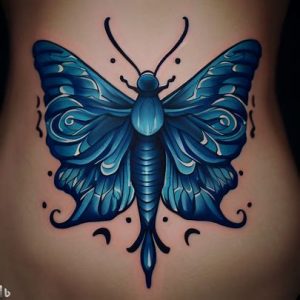
Traditional Moth Tattoo Flash
For those seeking inspiration or a starting point, traditional moth tattoo flash sheets offer a range of design options. These sheets feature pre-designed moth tattoos in the traditional style, showcasing various poses, sizes, and patterns. Tattoo artists often display these flash sheets in their studios, allowing clients to choose a design that resonates with them. The beauty of traditional moth tattoo flash lies in its ability to capture the essence of the moth’s symbolism while providing a diverse array of choices.
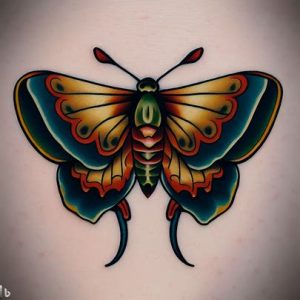
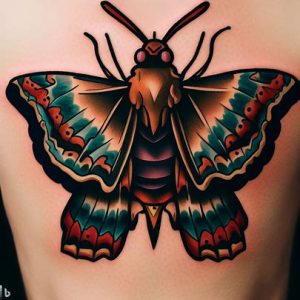
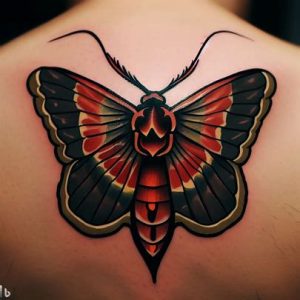
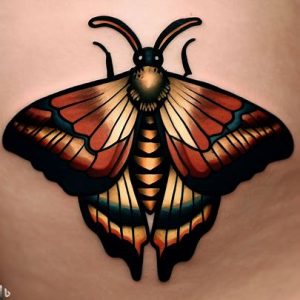
In Finally
The traditional moth tattoo is a captivating emblem of transformation, resilience, and the intricate beauty found in nature. Whether rendered in the classic American traditional style or reimagined through neo-traditional techniques, this design continues to enchant and inspire.
The symbolic journey of the moth, its unwavering determination to navigate through darkness, and its ultimate attraction to the light serve as a reminder of the human experience. As individuals ink their skin with the traditional moth, they carry with them a timeless symbol that celebrates both vulnerability and strength, guiding them through their own transformations and life’s mysterious paths.
FAQs
Question 1: What is the symbolism behind a traditional moth tattoo?
Answer: Traditional moth tattoos often symbolize transformation, vulnerability, and attraction to light. They can also represent a balance between light and darkness, life and death, as moths are creatures that are drawn to light but often meet their end in flames.
Question 2: What are some common design elements found in traditional moth tattoos?
Answer: Traditional moth tattoos typically feature intricate details such as wings with fine patterns, and antennae, and often incorporate bold and vibrant colors like red, yellow, and blue. They may also be surrounded by decorative elements like flowers, stars, or filigree to enhance the overall design.
Question 3: How does a traditional moth tattoo differ from a butterfly tattoo in terms of symbolism?
Answer: While both moths and butterflies symbolize transformation, the symbolism can vary. Butterflies are often associated with rebirth, freedom, and beauty, whereas moths are seen as more mysterious and symbolic of vulnerability. Moths are drawn to light and can represent a fascination with the unknown or an attraction to the deeper aspects of life.
Question 4: Can you explain the historical origins of traditional moth tattoos?
Answer: Traditional moth tattoos draw inspiration from various cultural and historical contexts. In many cultures, moths have been associated with spiritual and symbolic meanings. In the context of tattoos, the traditional style emerged from the early days of Western tattooing, characterized by bold lines, limited color palettes, and specific design motifs that continue to influence tattoo art today.
Question 5: What should someone consider when getting a traditional moth tattoo?
Answer: When getting a traditional moth tattoo, it’s important to consider factors such as the tattoo’s placement, size, and color scheme. Researching different design options and discussing your ideas with a skilled tattoo artist is essential to ensure the final result aligns with your vision. Additionally, understanding the personal significance you attach to the moth symbolism will help create a tattoo that holds meaning for you.
